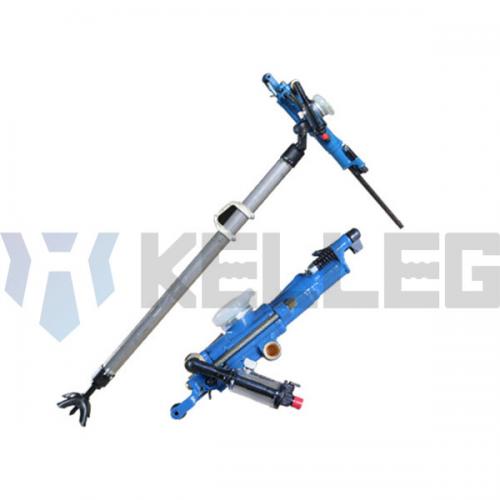
The hydraulic rock drill is a kind of
rock drilling machine that uses high-pressure oil as the power to push the
piston impact drilling tool and has an independent rotary mechanism. Because of
its complex structure and high matching accuracy, once there is a problem with
a component, it may affect the use of the rock drill. The impact piston is the
main part of the impact part of the rock drill. As long as the rock drill
starts to work, the impact piston will contact the shank adapter and cause a
high-level reciprocating motion. Naturally, its damage rate is higher than
other parts. Therefore, today, we mainly share
the reasons for the damage to the impact piston of the rock drill.
1. Impact piston
face damage
A. Mechanical damage
a. Local deformation occurs on the piston
impact face.
There is a top hole for processing
technology at the end of the shank adapter. The impact piston and the shank adapter
collide with high frequency. Over time, plastic deformation occurs, showing a
mastoid shape. Keep using the same manufacturer and specification shank
adapter, it will not cause more damage to the impact piston.
b. The shank adapter material or heat
treatment hardness is not suitable
If the shank adapter's hardness is low,
it will be deformed during the impact process, resulting in an uneven striking
surface, linear contact, and impact piston edge metal falling. If the shank
adapter's hardness is too high, it will crack or its metal will fall during the
impact process.
c. Running idly for a long time.
When the rock drill is driven with
no load for a long time, the rebound shock wave will cause the impact piston
and the shank adapter to generate a lot of heat, accompanied by the
micro-crack.
d. The shank adapter is deflected or
brought in small
gravels.
After the shank adapter is deflected or
brought in small
gravels, the two
contact surfaces are not parallel when the impact piston hits the shank
adapter. Because the impact is line to surface instead of surface to surface, it is easy to cause the
impact piston to drop small metal pieces.
B. Corrosion
If the rock drill is exposed to corrosive
substances, the exposed surface of the piston will be corroded, and the metal
surface will rust or fall off. The rock drill will produce high heat during
high frequency and high-speed impact, and the high heat will accelerate the
corrosion rate of the exposed surface of the piston.
2. The impact
piston guide area is damaged
There are two most common failure
phenomena in the guide bearing area: one is with the buffer piston contact
surface stuck, and the other is the impact of the piston front section
fracture.
Under the action of high-frequency shock
waves, tiny thermal cracks will occur locally in the impact piston, and these
small thermal cracks appear with more concentrated stress, and fatigue fracture
will occur.
3. impact piston
cavitation
If cavitation occurs on the surface of
the front and rear driving areas of the piston, small pitted pits appear, and it
does not affect the use but will affect the service life. If cavitation occurs
on the impact surface of the end face of the impact piston, it will not affect
the use. If the cavitation rough surface occurs in the sealing area, it will
cause frequent sealing replacement and serious oil leakage.
The above content is the reason why the
impact piston of the rock drill is damaged. To avoid the occurrence of the
above phenomenon, we can choose the shank adapter produced by regular
suppliers, regular maintenance, and prevent water from entering the rock drill.
Only this can improve the efficiency and prolong the rock drill service life.
Comments